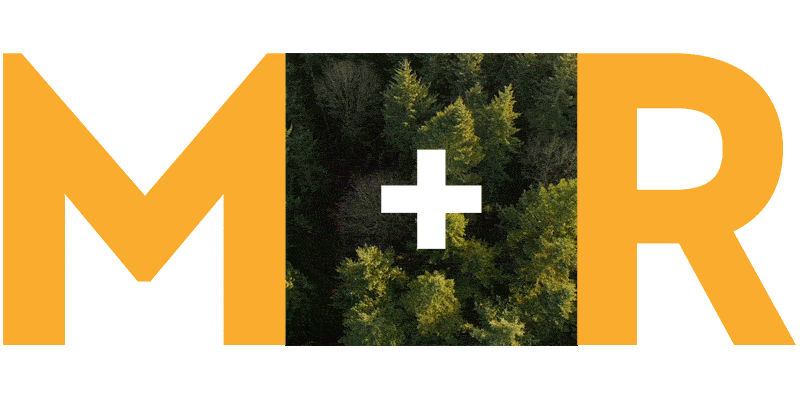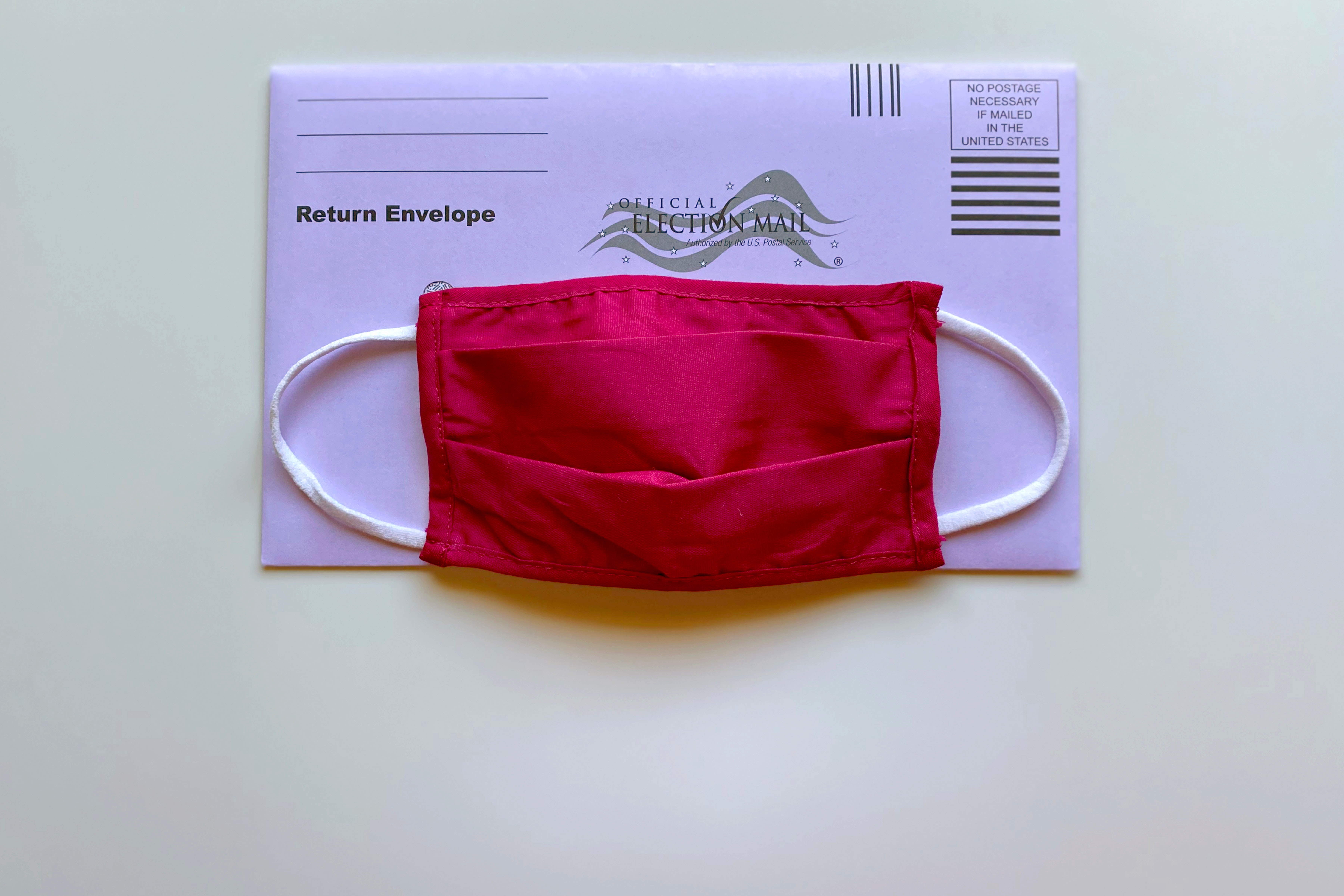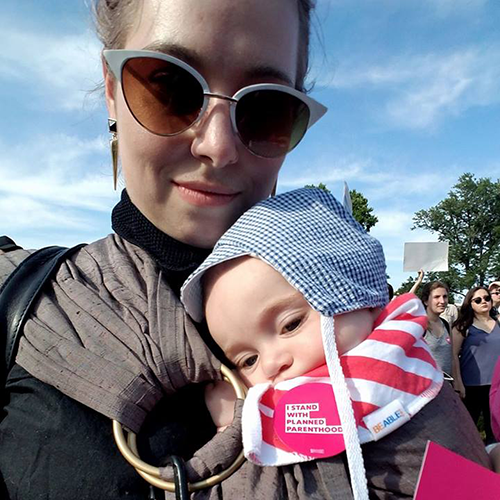Disenfranchisement targeting Black, Latinix, and Indigenous Americans has been a part of our system from the start. And when the Supreme Court gutted the Voting Rights Act in 2013, they released a predictable wave of new attacks on voting access.
One of the most dangerous current threats to voting rights for people of color comes from states shutting down polling places. States from Texas to Arizona to Georgia have closed hundreds of polling locations in recent years, the vast majority in areas with large and growing Black and Latinx populations.
Now the COVID pandemic has thrown traditional in-person voting into chaos, giving legislators cover to close even more polling locations during the presidential primaries and lead up to the general. In Kentucky, the number of polling places dropped from 3,700 to less than 200. Milwaukee, Wisconsin, a city of 600,000 people, went from 180 to just five. In New York City, polling places were closed or moved at the last minute, with little notice to voters.
But here’s the good news, at least for the 2020 Election. Many states are now offering expanded vote-by-mail, hypothetically making it easier for anyone to vote from anywhere, without stepping foot inside a voting booth—if they can figure out how to get a ballot, where to return it, and make sure to meet the deadlines for both.
That’s where you and your top-notch digital program steps in. Layering in digital ads to your existing electoral strategy can deliver critical information to voters wherever they are on the internet, make it easier to access mail-in ballots, and ensure voters know exactly where, when, and how to guarantee their vote is counted on Election Day. If you’re ready to add vote-by-mail ads to your digital strategy, we’ve got five things to keep in mind:
One: Start Now
In a normal Presidential election year, frequent voters know the drill, and it’s newer or infrequent voters who may need some extra guidance on how to cast a ballot. But in this vote-by-mail world, everyone is going to need a little help.
Now is the time to make sure your target voters understand how to request an absentee ballot, before the already noisy election year advertising gets even louder. There are a number of tools —like vote.org, voteamerica.com, and wecanvote.us—that make it easy to drive voters to state-specific information. Some can be embedded on your own site, keeping your trusted voice front and center.
With so much to distract potential voters right now, a few weeks of absentee ballot request ads won’t cut it. To make sure the maximum number of people can get a ballot, your ads program should be pushing ballot requests early, often, and right up to the request deadline.


Two: Show AND Tell
Of course, a link to a pretty form isn’t enough. It really can’t be overemphasized: many people have no idea how to vote by mail, even your most reliable voter universe. And even if they do, they still might think it’s a bad idea! That’s where the trusted voice of your organization can make a big difference.
Since each state is different, make sure you’re on top of the rules—then make those rules crystal clear for voters. Your ads should spell out the process, making it accessible and easy to follow.
Eye-catching text treatments can put the requirements front and center. Animations can help draw eyes and boil down complicated steps into compelling visuals. Volunteers can film simple explainer videos that speak directly to your target audience, calling out misconceptions and highlighting the most important steps to make sure every ballot gets counted.
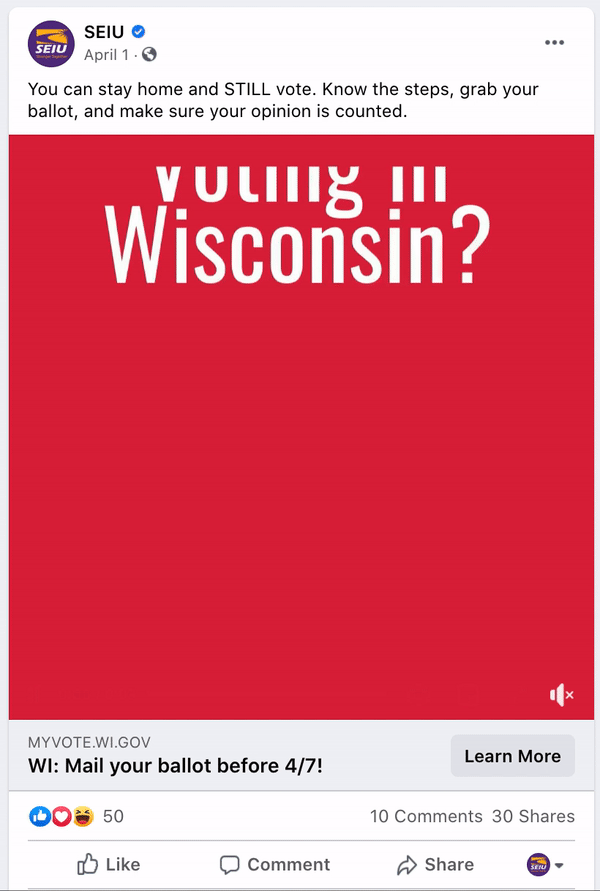
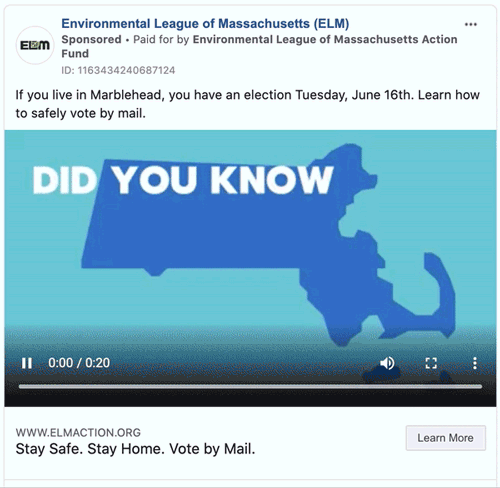
Three: Get Tracking
Once ballots have started to mail out, it’s time to layer in ads explaining how and when to return them—and when it gets down to the wire, even where to drop them off in-person.
Put tracking in place to identify potential voters who click through to the ballot request page (and ideally, people who actually complete a request), and plan a separate communications stream for these audiences. Remind voters to mail their ballots back, putting postmark deadlines front and center in every single ad. As Election Day nears, ID in-person drop-off locations or other last-minute options to make sure your audience knows where to go and what to do when it’s too late to mail. If possible, coordinate with offline ballot chase programs to layer ads with phone or SMS outreach.
Make sure ads are showing at a frequency high enough to stand out—at least seven times per week across platforms, and more leading up to the deadline. If budgets are limited, concentrate ads in the 2-3 weeks leading up to request or mail-in deadlines, as the impact of seeing an ad fades quickly.

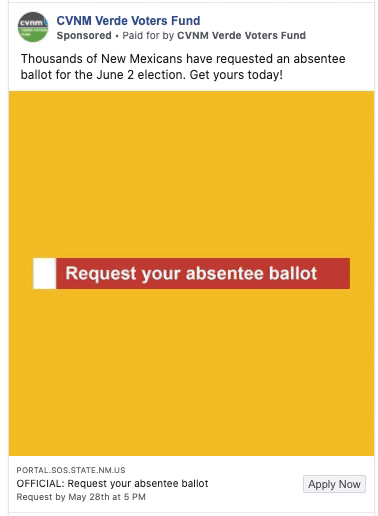
Four: Messaging matters
If you typically target low-frequency or new voters, running voter education ads in tandem with your persuasion or candidate ID programs may be old hat. But with vote-by-mail, even your high propensity voters need the boost. Direct mail and SMS tests have shown that what works in traditional GOTV outreach, like social pressure tactics, works for getting voters to request and mail back absentee ballots too. So remind your target voters that their friends and neighbors will be voting and that their voting record is public, like this example from the VPC:
 While digital ads may not have the text volume of a mail piece, they can take advantage of video, creative animation, and easy interactivity. Think a Zoom group chat placing ballots in the mail, or a text message exchange between friends making sure they’re ready to vote. Bring in the issues that matter to your audience and remind them why their vote is so important for their community and the country. If you can, use a testing tool like Swayable to experiment with which messaging frames move your audience the most—then double down on them in the weeks leading up to Election Day.
While digital ads may not have the text volume of a mail piece, they can take advantage of video, creative animation, and easy interactivity. Think a Zoom group chat placing ballots in the mail, or a text message exchange between friends making sure they’re ready to vote. Bring in the issues that matter to your audience and remind them why their vote is so important for their community and the country. If you can, use a testing tool like Swayable to experiment with which messaging frames move your audience the most—then double down on them in the weeks leading up to Election Day.
Five: Go for Surround Sound
Your options for digital ads also go far beyond Facebook. New political targeting restrictions can make channels like YouTube less cost-effective for narrow targeting on a smaller budget (unless you’re running non-partisan voter registration ads!), but there are other options to build a smart, deep-reaching media plan. Depending on your target audience and budget, consider layering in programmatic video and audio ads (ads that follow a voter wherever they happen to roam online), targeted digital tv buys, or even podcasts. Just remember that creative isn’t one-size-fits-all-channels.
And don’t leave your ads program to do all the heavy lifting. Coordinate your digital ad targeting with other social-distancing-friendly outreach tactics like SMS or peer-to-peer texting programs, mail, and phone banking to make sure your target audience is hearing and seeing about vote-by-mail wherever they turn.
Voting by mail may be a brave new world for many of us, but if this forced experiment works, it could also mark the beginning of a sea change in how America votes for years to come. Voting by mail certainly isn’t a panacea—in fact, a recent report on the Florida 2018 midterm elections found that mailed ballots cast by Black, Hispanic, or other voters of color were twice as likely to be rejected as those cast by white voters, often due to missing or mismatched signatures. Many voters are justifiably skeptical their votes will even count.
Solving America’s voting problems won’t happen in a single election (for that, we need long-term community organizing and power building, the restoration of the Voting Rights Act, and vocal outrage from ALL voters!). But in 2020, voting by mail will save lives and lay the groundwork for expanded vote-by-mail in future elections too, and that’s a huge step in the right direction.

